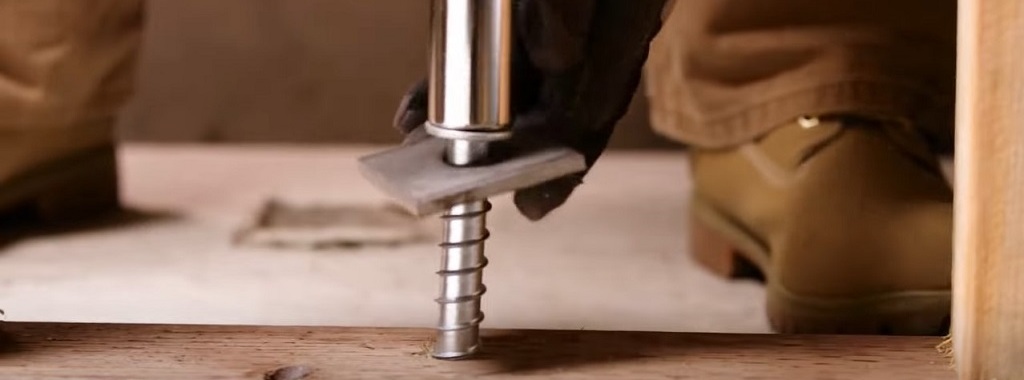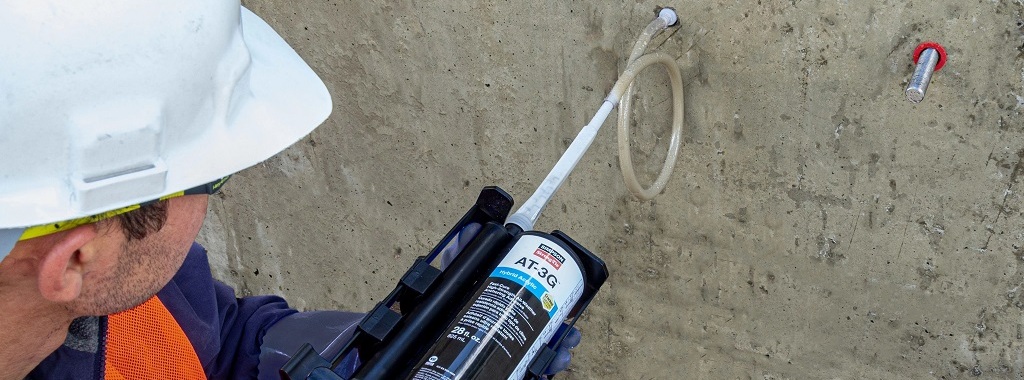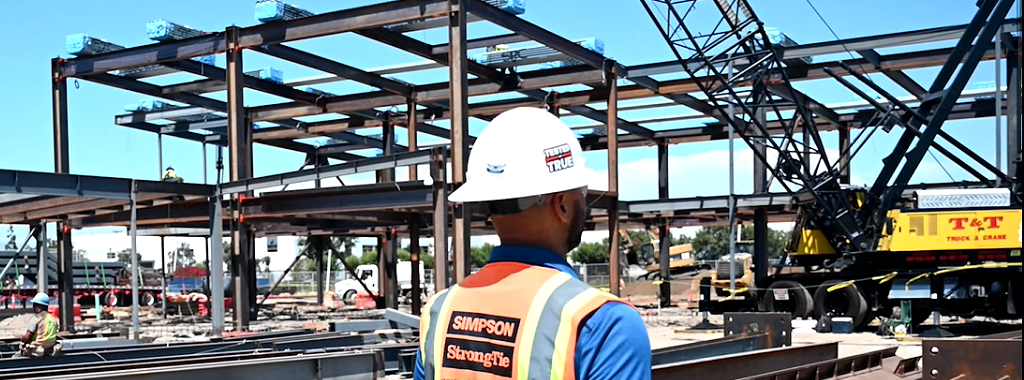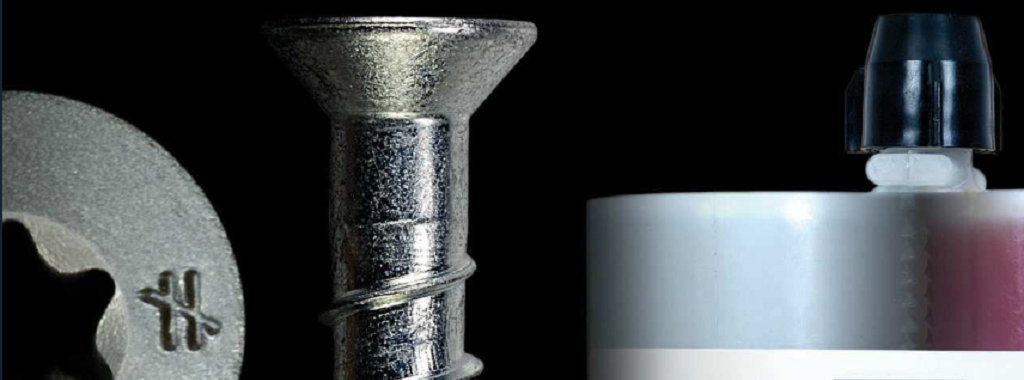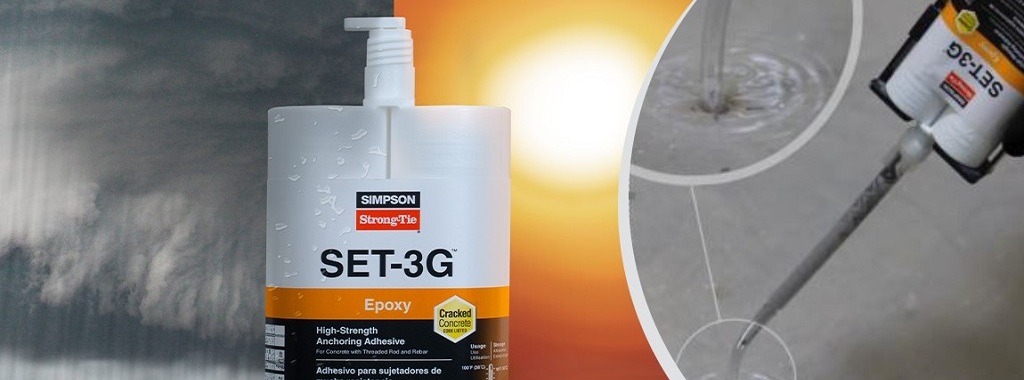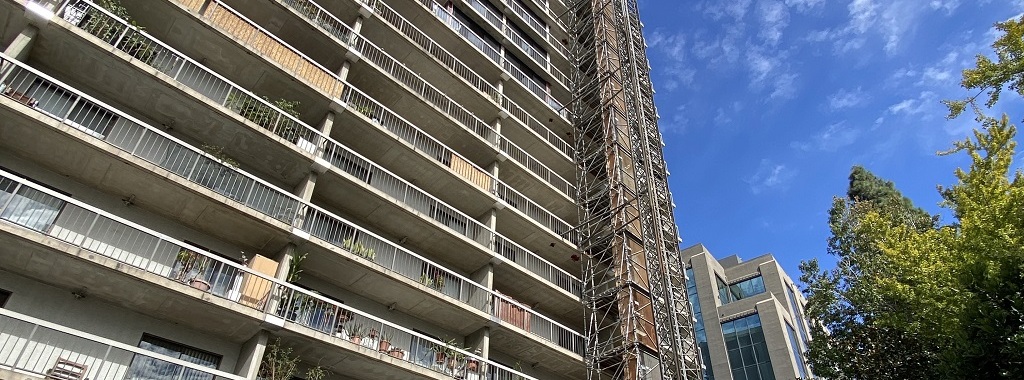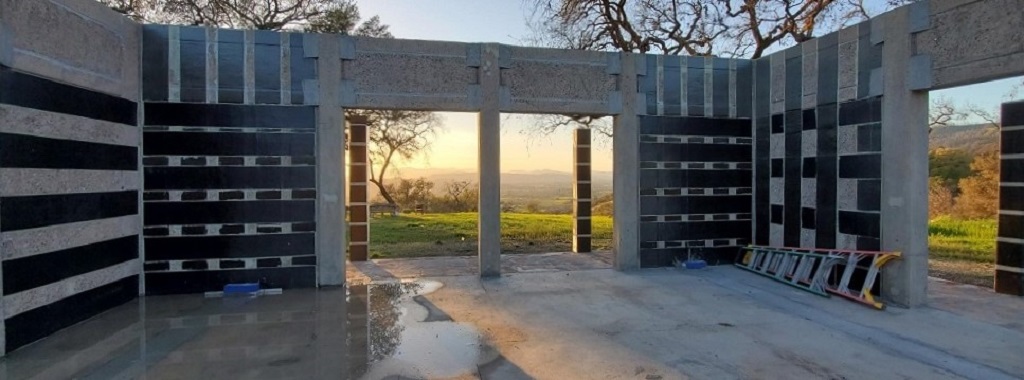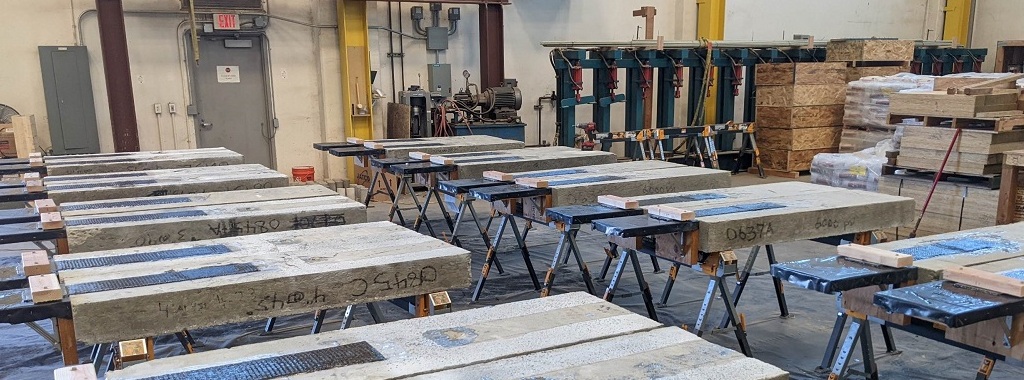One interesting part of being a field engineer for Simpson Strong-Tie is having the opportunity to see how different structural engineers may take different approaches to similar designs. We at Simpson Strong-Tie have come to appreciate these different approaches and embrace this phenomenon by providing multiple resources to aid in the completion of a design. This is very apparent when it comes to the design of post-installed anchors.
Category: Concrete
Case Studies highlighting our growing line of concrete solutions.
Introducing AT-3G™: Your high-strength cold-weather, fast-cure anchoring adhesive
In general, post–installed adhesive anchor design per ACI 318 Chapter 17 is relatively straightforward. In practice, however, post–installed anchorage can often become challenging because of fast–track project schedules, supply issues, ever-changing weather conditions, design conflicts/changes, or unexpected field conditions.
Simpson Strong-Tie® Yield-Link® Moment Connection Case Study: Rose Avenue Elementary
Structural engineers for the Rose Avenue Elementary School project in Oxnard, California, a high seismic zone, chose to switch from special moment frames requiring welded connections to the Simpson Strong-Tie Yield-Link moment connection, which features bolted connections instead of onsite welding. This case study shares the experiences of structural engineers, fabricators and other project partners utilizing this innovative solution for structural steel construction.
Common Engineering Technical Inquiries — Part I: Anchors
Over the next few months, I will be doing a short three-part series going over common technical inquiries we receive in the engineering department. There is a wealth of information available on our website and in our literature, but so much content can sometimes be difficult to navigate. It is often said that knowledge is power, so my hope is to empower you with all the technical support you need so you can complete your job quickly and efficiently.
Dry, Soaked, or Submerged Concrete — SET-3G Adhesive Allows Anchoring in Any Condition
Modern construction schedules and conditions create a demand for solutions that can perform in a wide variety of environments. In the following post, Field Engineer Chris Johnson provides a rundown of different concrete and hole conditions for adhesive anchoring, the related design factors, and proper installation instructions and approved adhesive products for submerged anchorage.
Project Snapshot: Tower Lateral System Strengthening Using FRP
Strengthening of shear walls and diaphragm-to-wall connections has started on Little Tokyo Towers (see photo 1) located in downtown Los Angeles, CA. This senior–living residential facility was built in 1975. Structural analysis by Tuan and Robinson Structural Engineers showed that some modest strengthening was required to improve the building’s lateral system performance in the event of an earthquake.
Project Snapshot Series Part 2: Historic Theatre Retrofit Using FRP
Structural renovation work continues on an historic, 1920s-era theater in Hollywood, California. This major renovation will improve the structural performance of the building and help ensure that theatergoers and building occupants are safe in the event of a major earthquake. We are excited to share a second update on this project that focuses on the use of fiber-reinforced polymer (FRP) for strengthening the theater’s roof diaphragm. Continue Reading
Mechanical Anchors: Screw vs. Expansion: — Which Is Right for Me?
Not all post-installed mechanical anchors are created equal. There are key differences between screw and expansion anchor types — differences that include how they gain their holding strength, installation requirements, and overall anchor performance. In the following post, field engineers Todd Hamilton, Chris Johnson and Derek Gilbert compare the two anchor types.
FRP Witness Panel Preparation and Testing – Lessons Learned and Best Practices
As a Composite Strengthening Systems™ Field Engineer at Simpson Strong-Tie, I’ve supported many composite strengthening projects from design through construction and had hands-on experience troubleshooting issues with FRP witness panels. Through these experiences, I’ve learned a few lessons and developed some best practices worth sharing with anyone in the engineering and construction communities who may encounter similar issues.
Strategic Alliance with Structural Technologies Brings End-to-End FRP Solutions to Concrete Strengthening and Repair Industry
Simpson Strong-Tie and Structural Technologies formed a strategic alliance for Composite Strengthening Systems™ (CSS) products in 2021. CSS products include fiber-reinforced polymer (FRP) and fabric-reinforced cementitious matrix (FRCM) strengthening systems. Additionally, where CSS products are not a viable solution, the alliance can also offer recommendations and design for other non-CSS or conventional strengthening solutions. This alliance allows each firm to specialize in their areas of expertise:

